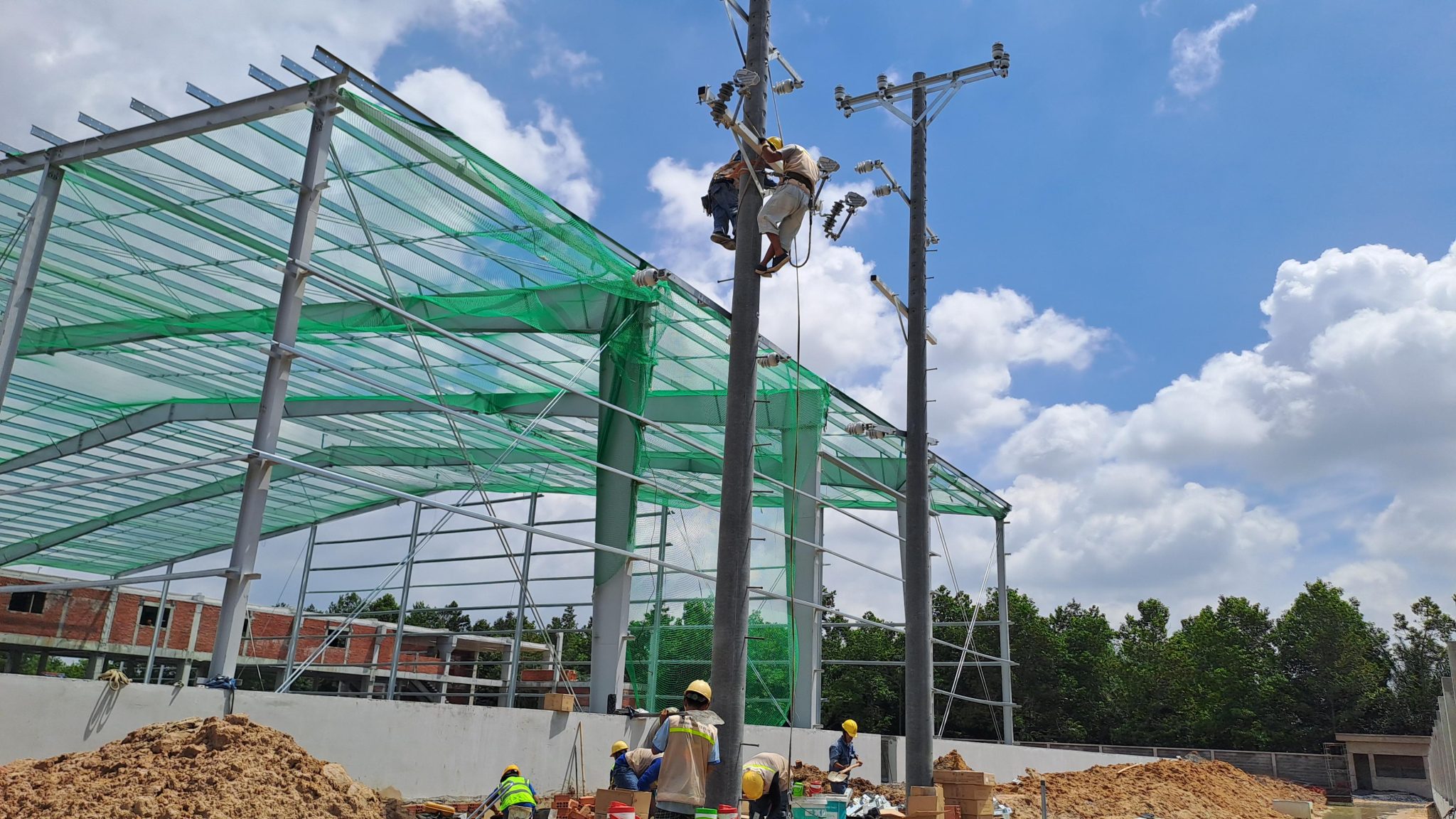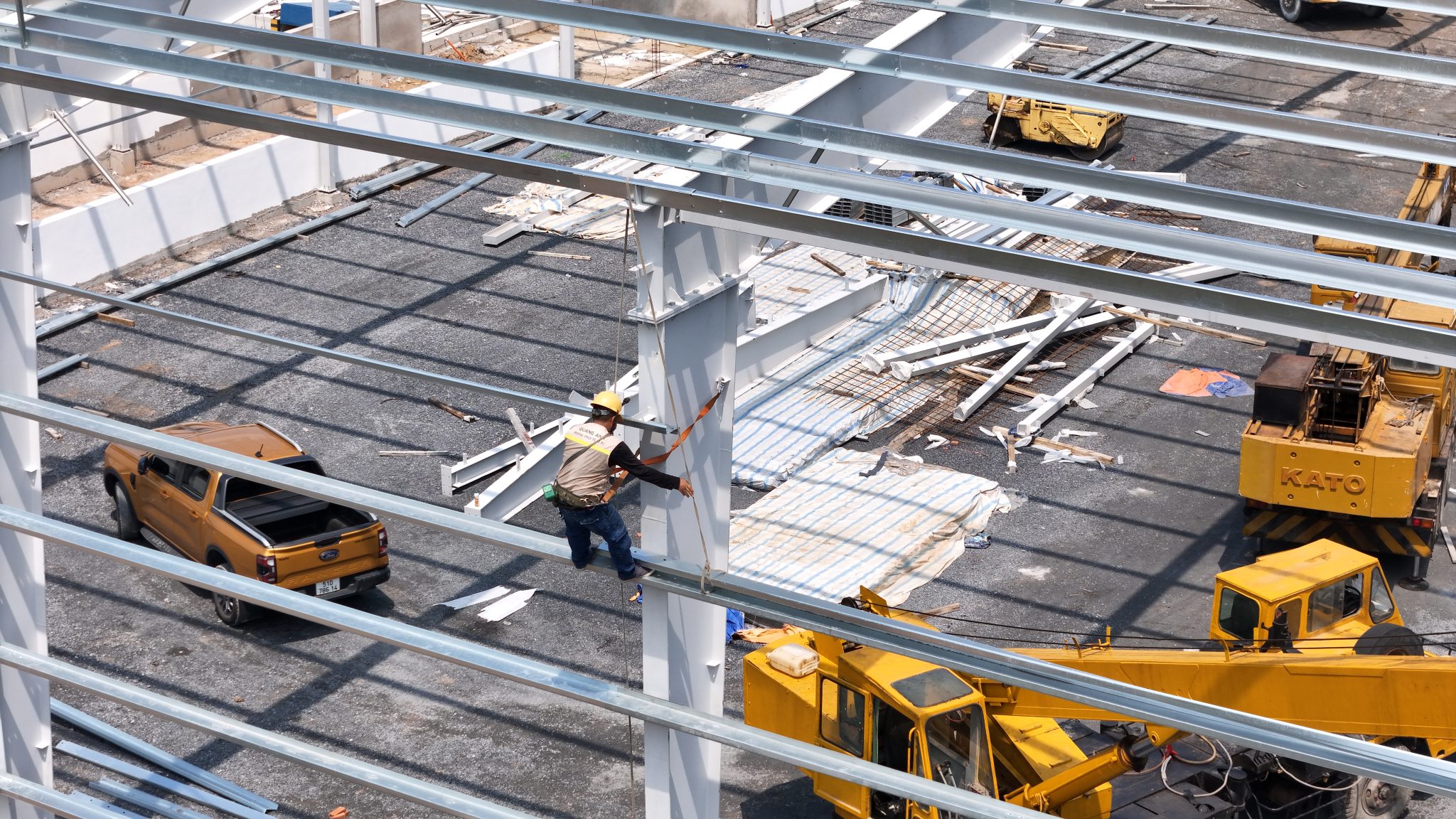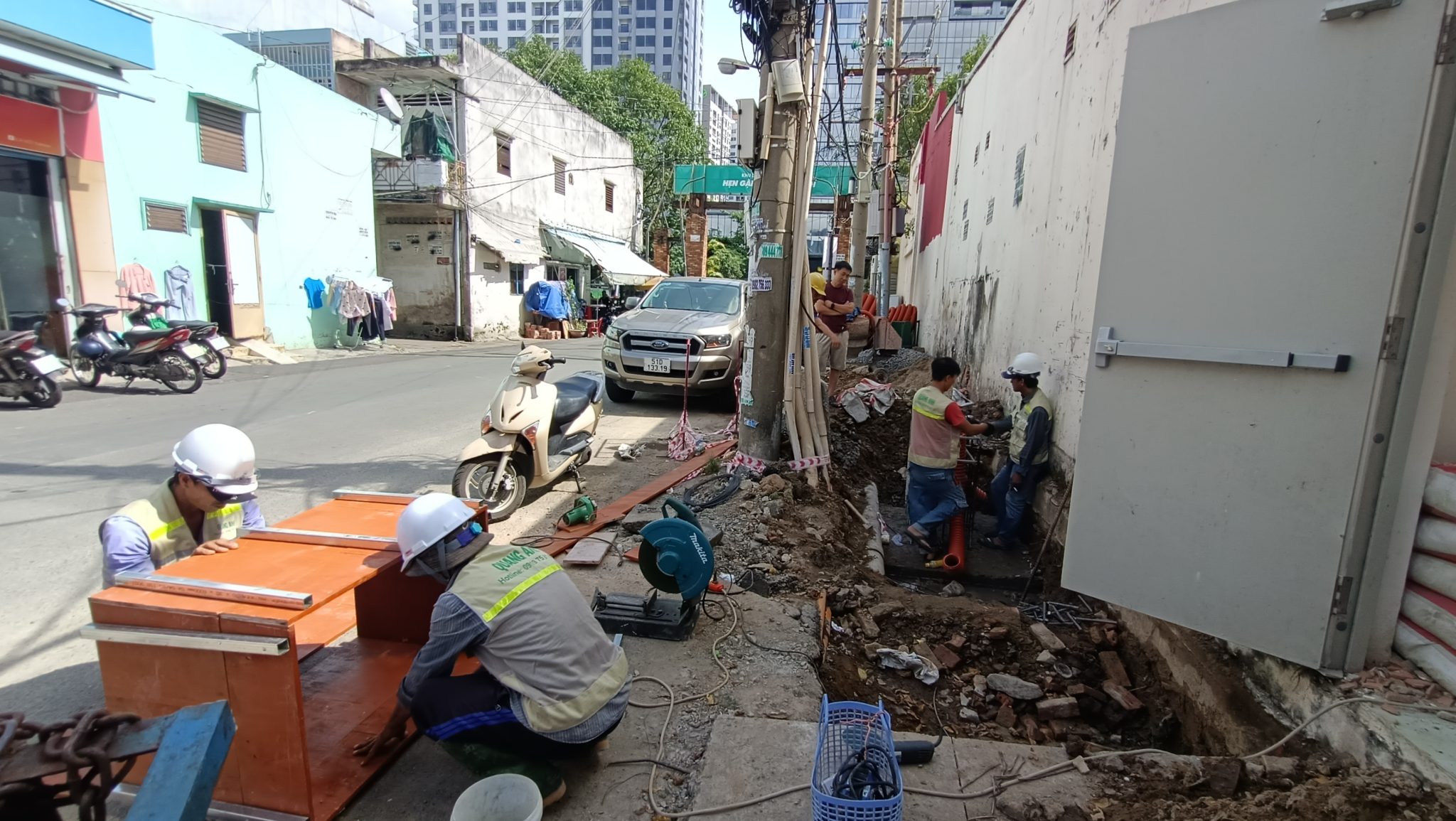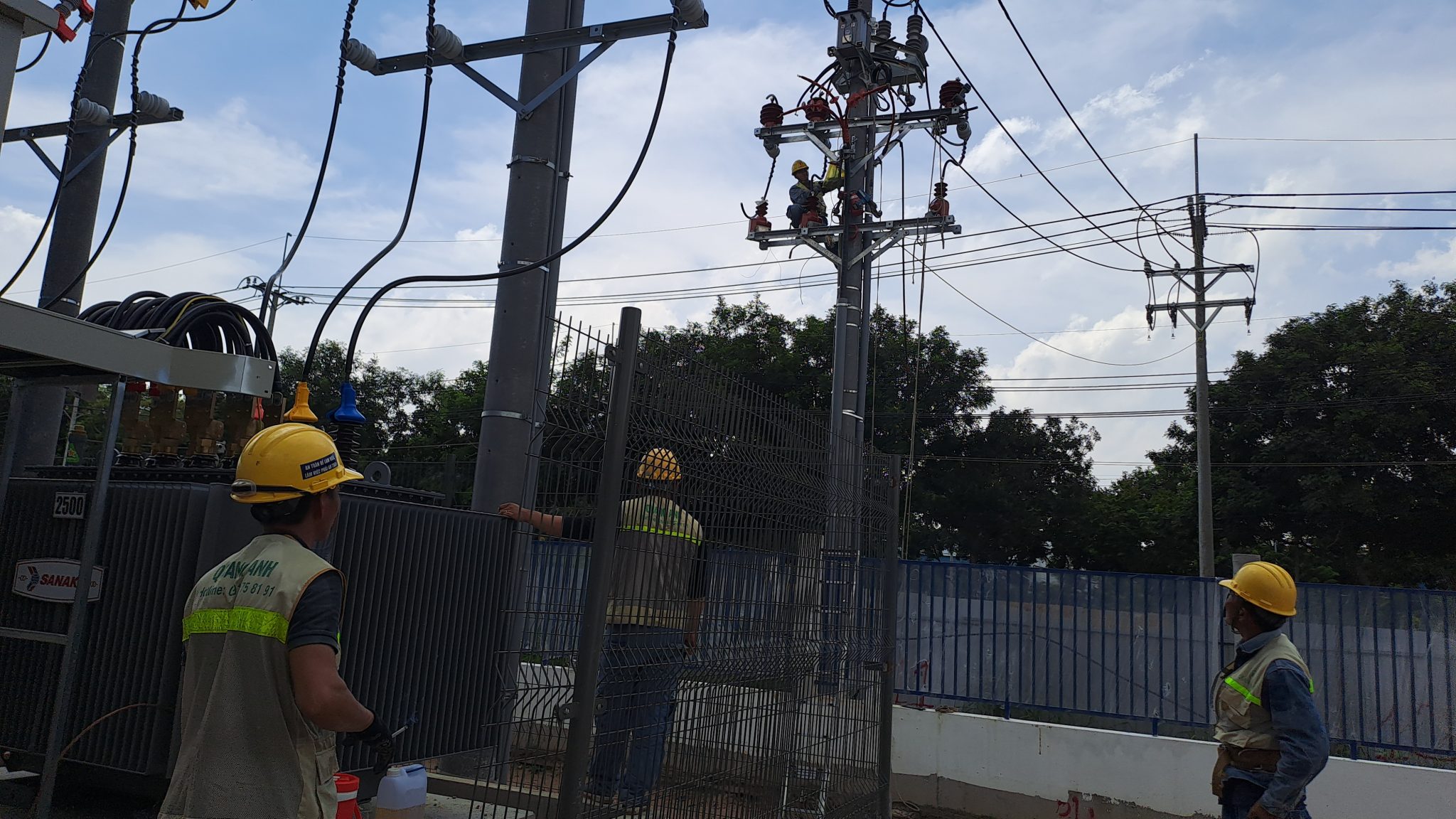News
Electric Vehicle Charging Station Maintenance: Detailed Procedures and Benefits
- Schedule and Inspection of Electric Vehicle Charging Stations
- Main Maintenance Tasks for Electric Vehicle Charging Stations
- Goals and Benefits of Electric Vehicle Charging Station Maintenance
- Specific Steps in the Maintenance of Electric Vehicle Charging Systems
- Other Important Notes in the Maintenance of Electric Vehicle Charging Stations
Electric vehicle charging station maintenance is a crucial process to ensure stable operation, safety, and extend the system’s lifespan. The process involves checking hardware, updating software, cleaning, and protecting the system from environmental factors.
Schedule and Inspection of Electric Vehicle Charging Stations
Maintenance of electric vehicle charging stations depends on the inspection schedule and frequency adjusted according to usage level and environmental conditions. With high demand or harsh environments, monthly checks and comprehensive quarterly inspections are required to ensure performance. Stations with less frequent use can reduce frequency but still require regular basic checks.
Maintaining performance and safety for an electric vehicle charging station plays a key role in modern energy systems. The maintenance and inspection schedule needs to be adjusted to suit the specific usage frequency and environmental conditions at each location. EV charging maintenance activities not only aim to detect early potential issues but also extend the lifespan of equipment. Maintenance plans can be divided into steps such as monthly basic inspections and comprehensive quarterly checks.
- Monthly basic checks: This is the first step of the EV charging maintenance process, to promptly detect visual damage signs such as frayed cables, broken connectors, or dust and oxidation at charging ports.
- Quarterly comprehensive checks: This activity includes detailed assessment of electronic devices, mechanics, and cooling systems. This ensures the device operates efficiently, with station software updates being a crucial part to optimize charger performance.
- Adjustment for conditions: For stations located at high traffic locations or severe weather conditions, it is necessary to increase maintenance frequency to monthly or even weekly.
Charging station inspection activities not only stop at spotting damage. It is necessary to thoroughly check charging ports, cables, and connectors to maintain stable connectivity. Additionally, proper cleaning to protect the paint and screen is a crucial step in EV charger upkeep. Besides, inspecting the cooling system and refrigeration should also be focused on, ensuring the equipment does not overheat during charging.
To ensure dynamic functionality and optimal performance, regular software updates are important. By measuring and evaluating charging performance, businesses can predict and timely address degrading signs, optimizing user time and energy.
Ultimately, the final goal of station maintenance and inspection is to ensure safety, minimize breakdowns, and optimize charging station operation. Thereby, not only is the equipment’s durability improved, but the user experience is also enhanced.

Main Maintenance Tasks for Electric Vehicle Charging Stations
Electric vehicle charging station maintenance tasks include regular visual inspections, software updates, and equipment cleaning. Check cables, connectors to prevent wear and damage, clean station surfaces, and replace old components to prevent potential issues.
Charging Station Maintenance: Building Safety for Sustainable Development
Electric vehicle charging station maintenance plays an important role in ensuring safety and optimizing performance during operation. The main maintenance activities include:
- Electrical Safety Check: To detect and timely handle risks of short circuit, fire or explosion, it is necessary to check the safety of circuit boards, electrical systems, and electrical equipment.
- Replacement of worn components: Outlets and charging cables need to be periodically replaced to avoid damage. Regularly check both charging cables and plugs at outlets to ensure firmness and uninterrupted connection.
- Calibration of charging devices: This helps optimize charging performance, save energy and time. Equipment needs to be precisely calibrated to ensure stable operation.
- Electromechanical maintenance: Clean and maintain the entire system, from electronic devices to mechanical structure and refrigeration system. This not only maintains stable operation but also extends the lifespan of the equipment.
- Handling charging station failures: Timely detection and repairing of arising damage avoids unexpected downtime and large repair costs later.
The above tasks need to be performed according to scheduled maintenance and may need adjustment depending on the weather and installation environment conditions of each type of charging station.

Goals and Benefits of Electric Vehicle Charging Station Maintenance
Electric vehicle charging station maintenance ensures safety by early detection of risks such as electric leakage and short circuits, thus preventing accidents. This also extends the charging station’s lifespan and optimizes operating efficiency, saving time and energy.
Electric vehicle charging station maintenance is a crucial element in ensuring electric vehicle safety, enhancing charging efficiency, and extending the lifespan of the equipment.
- Ensure safety: Maintenance helps early detect risks like short circuits, fires, or mechanical failures, thereby preventing potential safety issues.
- Increase device lifespan: Proper maintenance increases the durability of the components in the charging system, avoids unwanted incidents, and minimizes repair costs.
- Optimize charging performance: Ensuring that devices in the station work efficiently will optimize the time and energy consumption.
Maintenance Schedule and Frequency
- Regular inspection: Conduct monthly visual inspections to promptly detect wear and damage such as cables, connectors, or paintwork.
- Comprehensive inspection: Monitor and calibrate equipment quarterly, depending on usage and environmental conditions.
- Special conditions: In harsh climates or areas with high vehicle traffic, increased maintenance frequency is necessary.
Essential Steps and Measures of Maintenance
Hardware inspection
- Ensure that cables, connectors are not frayed or damaged.
- Check mechanical parts such as charging ports and covers to ensure they are not wet or dusty.
- Regularly clean the station with suitable materials to avoid scratching the paintwork.
Software update
- Periodically update software to fix security vulnerabilities and maintain new features.
Monitor operational performance
- Evaluate charging performance and calibrate equipment to ensure stability and accuracy during operation.
The Role of Maintenance for Safety and Operation
- Early detection of technical risks will help avoid serious incidents.
- Maintain operational stability, ensuring the charging station can operate continuously.
- Optimize energy use, reduce unnecessary consumption.

Specific Steps in the Maintenance of Electric Vehicle Charging Systems
The maintenance process includes checking battery systems, evaluating charging ports and cables, and assessing charging performance. This ensures the battery system operates stably and does not overheat while the charging converter operates accurately.
- Check charging ports and cables Checking charging ports and cables is an important aspect of the electric vehicle charging maintenance process. You need to inspect the charging port for signs of oxidation, corrosion, or mechanical damage. For charging cables and converters, ensure there are no signs of breaks, tears, or deformation. This is particularly essential if the charging cable must operate in harsh conditions or is affected by environmental factors such as passing traffic, water immersion, or impact. Visual inspections are expected to occur weekly or before each use, and independent electrical testing at least every 12 months.
- Evaluate charging performance To evaluate charging performance, the speed and efficiency of the charging process need to be checked to ensure the battery is fully charged without causing harm. Periodic evaluation helps detect performance degradation or faults that affect charging time and electricity transmission.
- Inspect and maintain electronic and mechanical components For electronic and mechanical components of charging stations, inspections help detect risks of short circuits, fires, or other technical faults. Replacing damaged components beyond their lifespan, such as electrical outlets, is necessary according to manufacturer recommendations or technical standards.
- Check and maintain cooling systems For stations and electric vehicles with cooling systems, periodic checks are necessary to ensure effective cooling and prevent overheating, which could damage components.
- Check the tension and electrical connection of plugs Ensuring plugs are always securely connected with proper tension reduces risks of disconnection, overload, or safety faults during charging.
- Regular maintenance and calibration Conduct regular maintenance to calibrate, fine-tune equipment to optimize performance, save charging time and energy, and extend device lifespan.

Other Important Notes in Charging Station Maintenance for Electric Vehicles
Note to design a suitable inspection schedule for the actual conditions of each charging station, and ensure skilled personnel manage it. Keeping maintenance records is also necessary to support management and system upgrades.
- Ensure electrical safety and fire prevention: Regular electric vehicle charging station maintenance cannot be omitted to ensure comprehensive electrical safety. This process helps check and detect risks that could lead to short circuits or fires and maintain the charging station’s performance at optimal levels.
- Check and maintain the quality of charging cables: Charging cables need careful monitoring before each use to ensure no mechanical or insulation damage. Moreover, periodic electrical testing every 12 months is necessary for cables that have been used long-term and are heavily exposed to the environment.
- Regularly replace cables and sockets: Over time, charging cables may become worn or damaged, directly affecting performance and safety. Regular replacement not only ensures stable connections but also enhances the charging station’s performance.
- Check plug tension suitability: To ensure plug safety, you need to maintain proper tension, avoiding slackness that could cause short circuits or unexpected incidents.
- Maintain lighting systems at charging stations: A fully equipped and standard lighting system not only provides convenience for users charging electric vehicles but also ensures safety, minimizing accident risks.
- Check and calibrate equipment in the station: From the controller to the power supply, each element in the charging system needs regular inspection and calibration to ensure optimal performance, saving energy and charging time.
- Check protection and cooling systems: Cooling systems and overload and overcurrent protection devices need careful checks to prevent incidents and extend the charging station’s lifespan.

Electric vehicle charging station maintenance not only provides technical benefits such as safety and high performance but also holds significant investment and strategic importance in building a sustainable and reliable electric vehicle ecosystem.
To ensure optimal operation of electric vehicle charging stations, contact QuangAnhcons via Hotline: +84 9 1975 8191 for suitable maintenance solutions consultation.
QuangAnhcons provides comprehensive electric vehicle charging station maintenance services, ensuring safety, high performance, and long-term lifespan for your charging system.

 Tiếng Việt
Tiếng Việt 简体中文
简体中文 Deutsch
Deutsch 日本語
日本語 한국어
한국어 ไทย
ไทย Русский
Русский Français
Français
